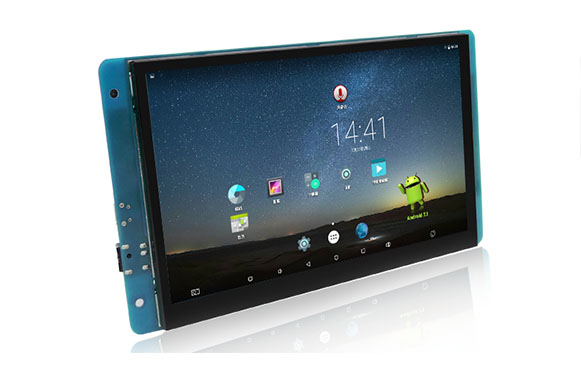
Screens are already in every household, from televisions at home, billboards on the roadside to ordering machines in restaurants, we deal with screens all the time. So how did the display evolve? This article will introduce the most representative types, which are CRT, LCD, and LED.
In 1897, Nobel prize-winning physicist Karl Ferdinand Braun created the first CRT (Cathode Ray Tube). The working principle is: the electron gun emits electrons, and the deflection Angle of the electrons is controlled by the deflection coil. Finally, the high-speed electrons hit the phosphorescent material on the screen to make it glow. The voltage is used to adjust the power of the electron beam, which will form different light points on the screen to form various patterns and words.
In 1954, RCA CT-100, the first civilian color TV supporting NTSC standard, was born, which is also the beginning of the popularity of color TV. Subsequently, countries all over the world are developing and producing television, and the television industry has become a booming new industry.
In 1964, the first LCD (liquid crystal display) was introduced. LCD technology makes flat-panel TVS possible. Later, American inventor James Fergason's work on LCD led to the first LCD television in 1972.
Liquid crystal display (LCD) is a kind of active matrix LCD driven by thin film transistor. It mainly uses current to stimulate the liquid crystal molecules to produce point, line and surface with the back lamp to form a picture. IPS, TFT, and SLCD are all subclasses of LCD. Its working principle is that under the action of the electric field, the alignment direction of liquid crystal molecules changes, so that the transmittance changes, complete the electro-optical conversion, and then use red, green, blue three color filter film, complete the color display.
LED has been widely valued and developed rapidly because it has many advantages. For example: high brightness, low working voltage, low power consumption, development prospects are extremely broad. At present, it is developing towards higher brightness, higher weather resistance, luminescence density, luminescence uniformity and panchromatic direction.
LCD and LED have something in common, but there are also differences. The biggest difference between LCD and LED is that LCD must rely on passive light source, while LED is an active luminous display device. LCDs allow for more subtle pattern changes than leds, with more delicate displays and brighter colors.

Each type has its pros and cons, and it's wise to choose according to your usage scenario and budget. LED, for example, is normally thinner than LCD, because we don't need an extra backlight layer, but LEDs don't produce as bright colors as LCDS such as UART LCD display when displaying still images and users can always see sticky images on LEDs.
In order to help people choose the right display solution, we continue to develop and innovate. Proculus provides perfect LCD solutions for industrial equipment, medical equipment, smart home, etc., highly flexible customized services and stable product performance make Proculus be popular by customers.
Welcome to learn more: www.proculustech.com
